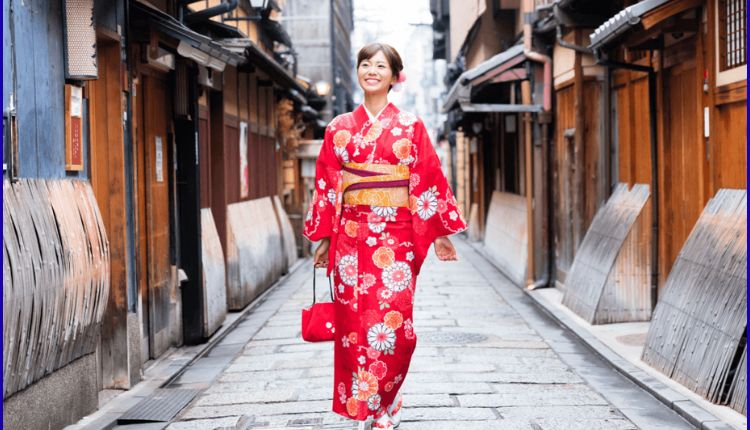Now it comprises a distinctive subculture focused on humans as anthropomorphized animal characters — creatures who have human and animal features. While kemono is comparable to the Western “furry” fandom, it has distinct artistic traditions, aesthetics, and community values. Kemono, which has roots in Japanese anime, manga, and video game culture, is both an art form and a lifestyle adopted by fans globally.
The characters usually have exaggerated animal traits like fur, snouts, tails, and claws but are also capable of human emotions, communication, and fashion. Plentiful in the community, this combination embraces the adorable, untamed, and occasionally feral natures of these half-beasts.
Kemono: The Game-Changer and how it came to be
That has its origins in Japanese folklore and mythology. The most common types of characters in traditional stories were animal spirits called “yōkai” and “bakemono” that could change into humans or take on human behaviors. Such ancient stories inspired the modern kemono aesthetic, in which animals and humans merge in a hybrid form.
In the 20th century, Japan’s animation started to include anthropomorphic characters in a more stylized manner. Shows such as Kimba the White Lion and Urusei Yatsura made animal-human hybrids mainstream for audiences, laying the groundwork for later acceptance of these ideas. The true kemono style, however, began to take form in the late 80s and 1990s when more niche manga and doujinshi (fan-made comics) challenged how far the genre could go with animal-human storytelling. These characters also started sporting softer facial features, larger expressive eyes, and fluffy textures — hallmarks that separate kemono from its Western counterparts.
Kemono vs. furries: What’s the difference?
While kemono is frequently likened to the Western furry fandom, several differences exist that make it its own beast. Both communities share a commonality in their appreciation for anthropomorphic animal characters, and there do exist differences in the mixture of artistic styles, social contexts, and intentions.
The style art has a much more overt influence on Japanese anime and manga. It tends to be characterized by large, doe-like eyes and soft lines and bright colors, and it tends to come down on the side of cute and fantasy rather than realistic or images. Western furry art, by contrast, encompasses a wider range of expressions, including hyperrealistic and oriented work.
Another differentiating factor is the community behavior. The fandom tends to be convention-centric in Japan, the most prominent of which is Kemocon, where those taking part don fursuits with big, expressive heads and extensive detail work. The emphasis is on artistry and storytelling rather than roleplay or social identity, as is more common in Western furry circles.
Kemono: The Beast-Like Culture Taking the World by Storm
Kemono is found in much of the Japanese media, especially anime, manga, and video games. Popular characters such as Agumon from Digimon, Lucario from Pokémon, and Isabelle from Animal Crossing embody kemono aesthetics with their animalistic features and humanlike personalities.
Anime series, including Beastars and Aggretsuko, have thrust the genre into the global spotlight. Beastars tackles serious societal topics through anthropomorphized animals, serving as a metafiction about prejudice and identity issues, and Aggretsuko hilariously presents an office worker’s struggles through the eyes of a stressed red panda. These shows show how the genre can be an interesting lens through which to explore complex themes.
In the gaming world, franchises like Monster Hunter and Final Fantasy feature kemono-inspired creatures that combine animalistic power with human intelligence. This design philosophy gives artists and developers the tools to create characters that are both approachable and highly fantastical, which is how we have wide-reaching characters across media.
Fursuits and the Culture of Cosplay
Fursuiting can be an important aspect of the kemono community. The costumes are typically intricate and customized, spotlighting the kawaii (cute) element of Japanese culture. It fursuits have different aesthetics—they tend to sport big heads, fuzzy textures, and exaggerated eyes.
Japanese fursuit makers are well-known, respected, and internationally recognized artists and studios, such as Luskwood, Mugi Studios, and Kemono Fursuits Japan. Many of them attend kemono conventions, where they walk around in full suits, taking part in dance contests and staged photo opportunities that bring new life to their characters.
This doesn’t mean all kemono cosplaying is in full fursuit, of course. Add some partial costumes, masks, or themed accessories from a fandom, and they’re also showing love for the genre. Every year, the creativity in the kemono cosplay world never fails to impress.
Online Communities And the Global Impact
While it has deep Japanese roots, It has found audiences worldwide. Other active communities, including online platforms like Twitter, Pixiv, DeviantArt, Discord, etc.
Hashtags such as art are widespread, thereby forming a network of fans and creators. Kemono has embraced international influence, but fans abroad adjust to local culture and art, creating new hybrid pieces that still capture the spirit of the kemono style.
VRChat and collaborative spaces like it have also played into the limbs of kemono, and they have become a hub of kemono fans. In this context, 3D avatars inspired by kemono designs enable users to interact with one another in virtual worlds, further blurring the boundaries between the fantastic and the real.
Criticisms and Challenges
That culture is not without its own challenges despite this growth. Sometimes, it has created confusion or conflation with furry culture in the West, which has led to misunderstandings or misrepresentations. Some artists and fans in Japan feel that the cultures should remain separate, instead focusing on the distinct artistic values of this.
The concerns around appropriation or misinterpretation by global audiences unfamiliar with Japanese culture are also valid. To appreciate kemono is to appreciate not only its qualities — its heterogeneous charms —but also its legacy, its context, and the deference that it requires of both followers and fans.
What’s Next?
The future of looks bright as technology, globalization, and fan gentrification lower the barriers to entry to fandoms. The boundaries of what seris can be are constantly expanding with the rise of virtual reality, AI-generated art, and international partnerships.
More creators are looking beyond just manga-style art to hybrid aliens, comics, animations, and digital media, expanding kemono into new realms of fantasy, sci-fi, and emotional narrative. Such educational undertakings also help maintain the artistic and cultural purity of FOC while welcoming fresh blood to the genre.
It is not just an art style—it is a lively expression of creativity, culture, and self. Little eyes. Big eyes. Fur or feathers. Whether it’s the tiny eyes of a red panda office worker or the fierce roar of a lion warrior, charms hearts and inspires tales of human and animal collisions in ways that are married in delightfully unexpected approaches.





